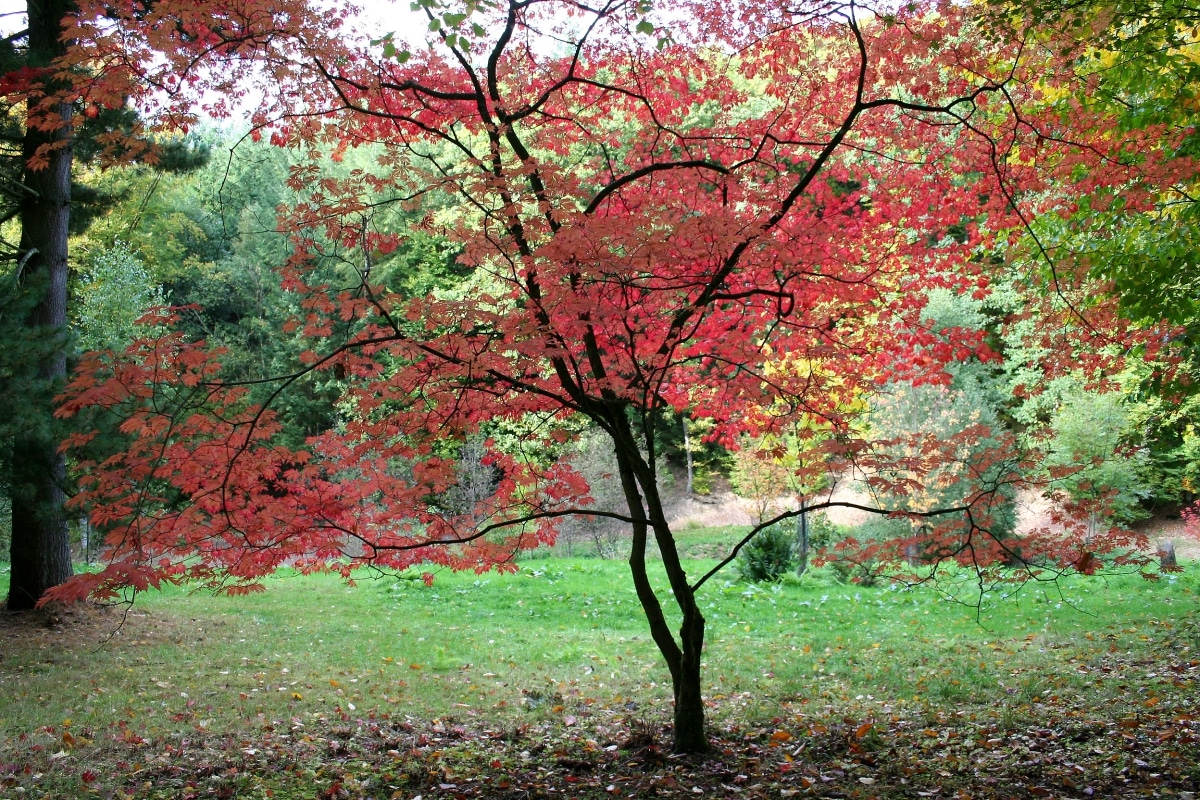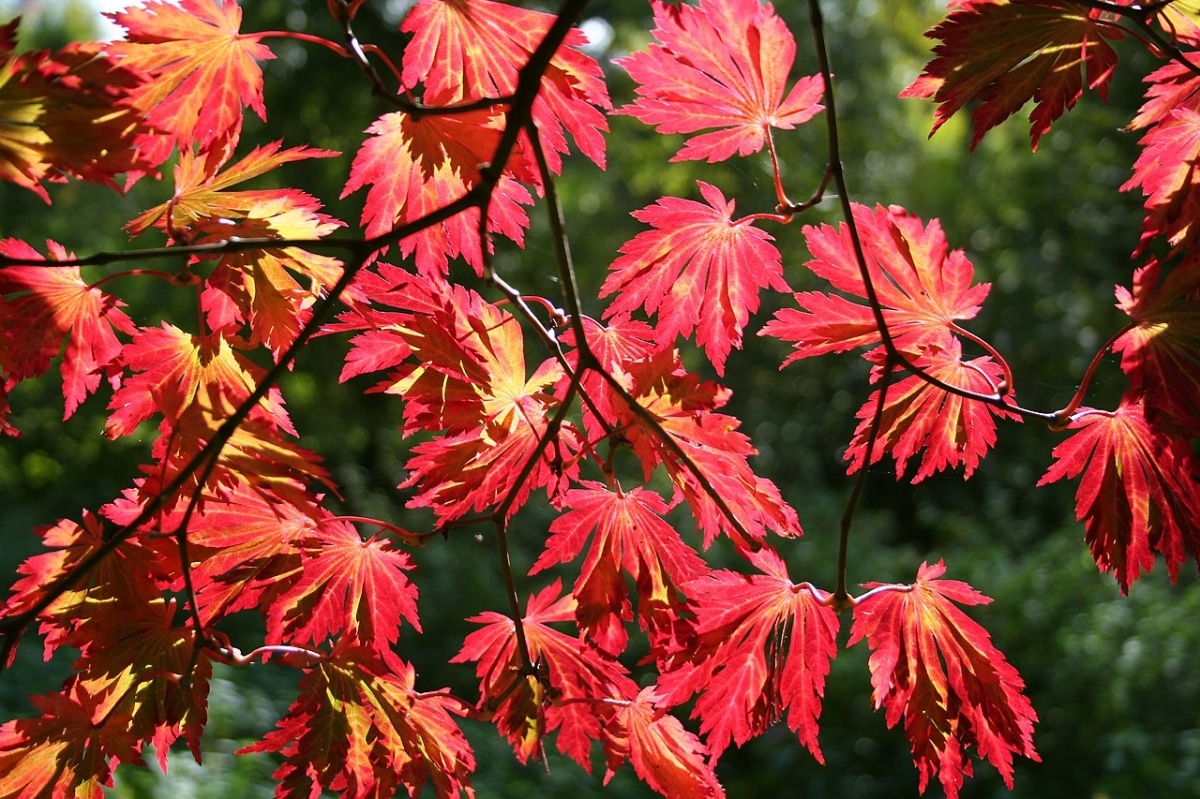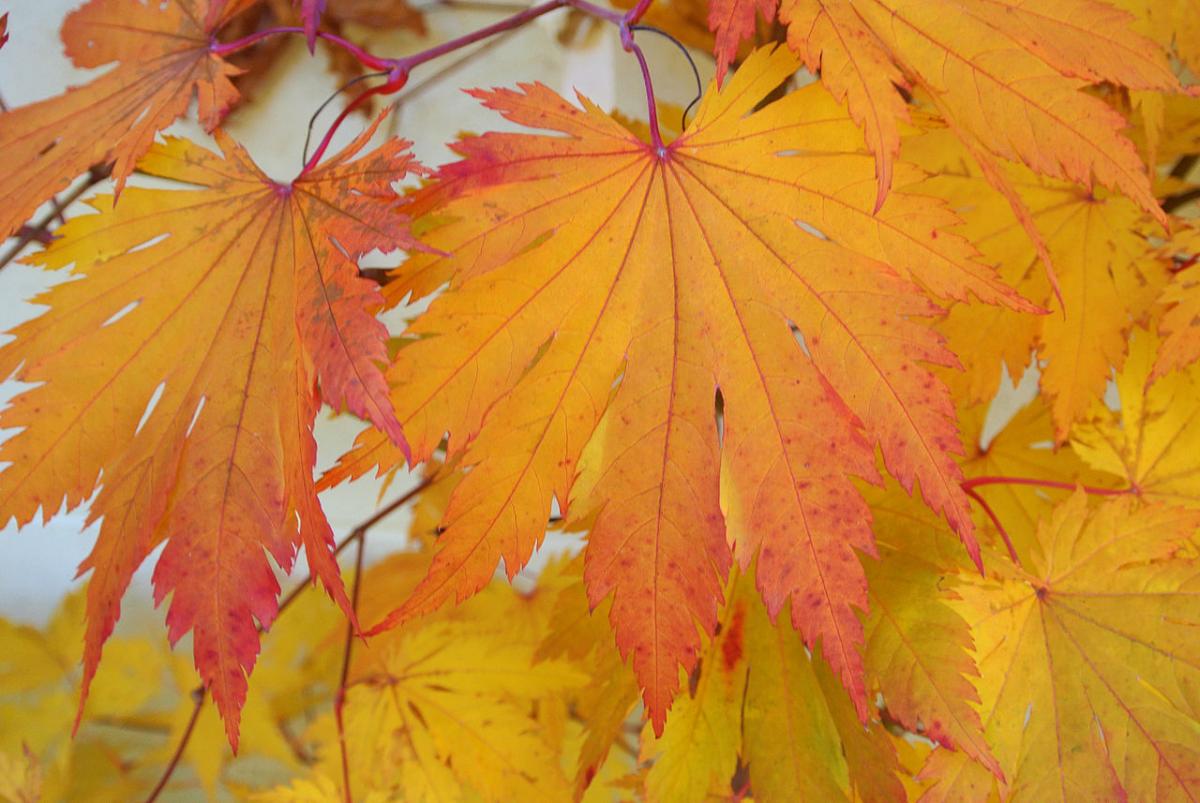
El Acer japonicum It is a deciduous tree much like the Japanese maple (Acer palmatum), but unlike this one, its leaves have more than seven lobes, while A. palmatum normally has 5 or 7, rarely 9. In addition, we are talking about a very elegant plant, which can be used to add an oriental touch to a garden.
Its growth rate is slow, but that should not discourage you: from a very young age it stands out for its beauty. So why not get one? Next we will tell you everything about him.
Origin and characteristics of Acer japonicum

Image - Wikimedia / Jean-Pol GRANDMONT
Known as Japanese plush maple, referring to the soft touch of its leaves, or "full moon" maple, this is a deciduous tree native to Japan and South Korea that shares habitat with the japanese maple. It grows between 5 and 15 meters high, and develops a not too thick trunk that measures about 40 centimeters in diameter.
The cup is wide, reaching 3 meters, and very branched. The leaves are palmate, lobed, in fact they usually have between 7 and 13 lobes with a serrated margin. These are green, but during the fall they turn red or yellow before falling.
Blooms in spring. Its flowers measure 1 centimeter in diameter and are red. They appear gathered in hanging corymbs that sprout from the ends of the branches. Once they are fertilized, the fruits ripen, which are disamara (two samaras joined by one side of the seed) winged, which measure about 3 centimeters in total.
For what do you use it?
El Acer japonicum It has only one use: the ornamental. Whether planted in a garden or in a pot, it is a plant that serves to decorate a place. In addition, it is an ideal species to work as a bonsai, since, like other maples, it tolerates pruning well.
What care to give Acer japonicum?
Our protagonist is a tree that can be very easy to care for in temperate and humid climates, but very difficult to maintain in places where summers are very hot. Therefore, let's first see what are the most suitable growing conditions for this plant:
- Climate: It is found in the mountainous regions of East Asia, where the climate is temperate, with mild summers and snowy winters. Also, the ambient humidity is high.
- Land: rich in organic matter, light, and with good drainage. It should not be planted in clay soils, since when the pH is 7 or higher it will have problems due to iron deficiency.
And having said this, let us now see how to take care of it:
Location

Image - Wikimedia / Jean-Pol GRANDMONT
As it is a plant that needs to feel the passing of the seasons, we will have it outdoors throughout the year. But where exactly? It is best to put it near other large trees, so that they give it shade.. This is very important, especially when it is young, and even more so if it is grown in an area where summer temperatures exceed 30ºC.
As it gains height and strength, it can gradually get used to getting a bit of sun, and always 'glancing' through the leaves and branches of other plants; that is, never directly. But, I repeat: if it is very hot in summer, it should always be kept in the shaderegardless of how old you are.
Soil or substrate
- Garden: if you are going to plant it in the garden, you must keep in mind that it will only grow well if the soil is acidic or slightly acidic, fertile and if it absorbs and filters water quickly.
- Flower pot: if you have a garden, or have one but with alkaline soil, the ideal is to grow it in a pot with soil for acid plants such as this. Now, from my own experience, if you are in the Mediterranean region I recommend using coconut fiber (buy it here) or a mixture of akadama with 30% kiryuzuna, as this will have fewer problems keeping its leaves hydrated in summer.
Irrigation
If it doesn't rain frequently, we will have to water it ourselves since the Acer japonicum does not resist drought. But when? It's hard to say, because every climate is different, but yes You must bear in mind that you should never let the soil dry out completely, especially during the summer.
I am in Mallorca and I water them 3-4 times a week in summer, and 1-2 times a week in spring and autumn. In winter I don't usually water much, since the temperatures are cool and the degree of insolation is lower, that makes the morning dew droplets remain on the plants longer; and since it usually rains, I only water once every 10 or 15 days, when I see that the land is dry.
Therefore, it is important that you know your climate, and that you water when you consider it necessary. And by the way, use rainwater whenever you can; is the best for your tree. If the water is alkaline you will have to lower the pH with a little lemon or vinegar.
Subscriber

Image - Wikimedia / James Steakley
In case you have it in the garden, it is highly advisable to use powdered organic fertilizers such as the manure of herbivorous animals, compost or the like. But if it's in flower pot, it will be preferable to use fertilizers or liquid fertilizers, such as this for acid plants, so that the soil continues to have good drainage.
Generally, will be paid in spring and summer, but if autumn is warm or mild in your area, to the point that your tree keeps its leaves intact, you can continue to fertilize it during that season.
Pruning
Pruning it will be done at the end of winterbefore the leaves sprout. Dead branches must be removed and, if necessary, cut back those that have grown much more than the rest.
Multiplication
El Acer japonicum multiplies by seeds during the autumn-winter, since they need to go cold before germinating. Also for cuttings in spring.
Rusticity
It supports frosts of up to -18ºC, but not if they are late. It is a plant that as soon as the temperatures begin to improve, it sprouts quickly, and if they drop abruptly, it suffers a lot. For this reason, if there are usually frostbites in your area, it doesn't hurt to protect it with an anti-frost cloth if it sprouts soon (you can buy it here).
What did you think of the Acer japonicum?